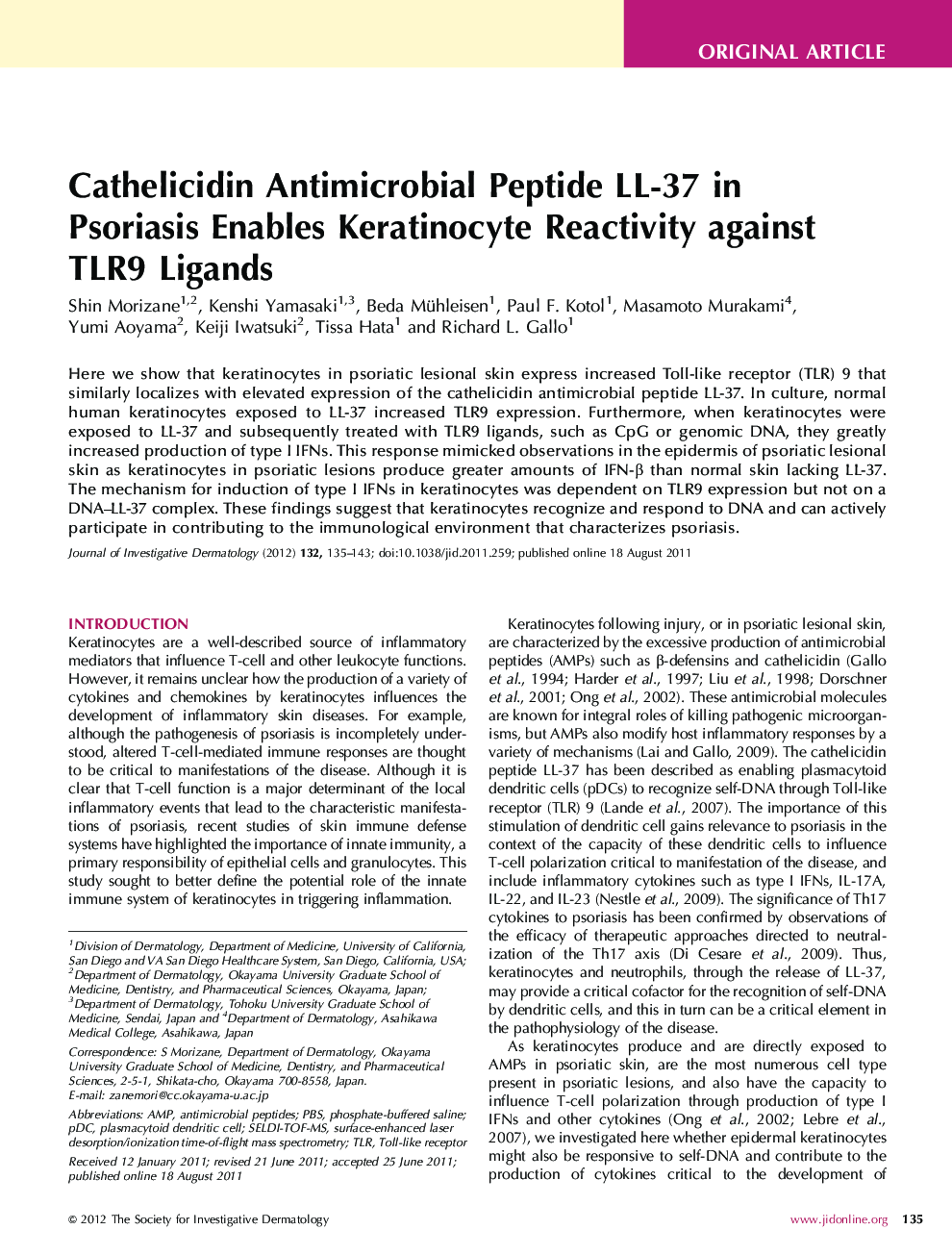| Article ID | Journal | Published Year | Pages | File Type |
|---|---|---|---|---|
| 6077708 | Journal of Investigative Dermatology | 2012 | 9 Pages |
Abstract
Here we show that keratinocytes in psoriatic lesional skin express increased Toll-like receptor (TLR) 9 that similarly localizes with elevated expression of the cathelicidin antimicrobial peptide LL-37. In culture, normal human keratinocytes exposed to LL-37 increased TLR9 expression. Furthermore, when keratinocytes were exposed to LL-37 and subsequently treated with TLR9 ligands, such as CpG or genomic DNA, they greatly increased production of type I IFNs. This response mimicked observations in the epidermis of psoriatic lesional skin as keratinocytes in psoriatic lesions produce greater amounts of IFN-β than normal skin lacking LL-37. The mechanism for induction of type I IFNs in keratinocytes was dependent on TLR9 expression but not on a DNA-LL-37 complex. These findings suggest that keratinocytes recognize and respond to DNA and can actively participate in contributing to the immunological environment that characterizes psoriasis.
Related Topics
Health Sciences
Medicine and Dentistry
Dermatology
Authors
Shin Morizane, Kenshi Yamasaki, Beda Mühleisen, Paul F. Kotol, Masamoto Murakami, Yumi Aoyama, Keiji Iwatsuki, Tissa Hata, Richard L. Gallo,
